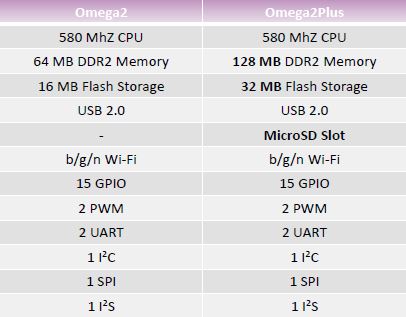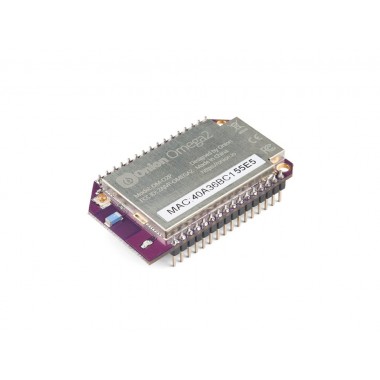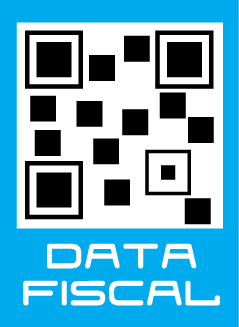Overview:
What the heck is an IoT computer? It is a Linux computer designed specifically for building connected hardware applications. It combines the tiny form factor and power-efficiency of the Arduino, with the power and flexibilities of the Raspberry Pi.
- The Omega2 is easy to use, even for people who are just getting started with building hardware and software.
- The Omega2 is expandable, and plugs into a variety of “dock” boards which support a family expansion to allow you to make cool projects.
- The Omega2 is affordable, allowing everyone to own one.
- The Omega2 is tiny: We made the Omega2 tiny so that it can easily fit into your class project or company’s product. It is less than 1/4 the size of the Raspberry Pi, and less than 1/3 the size of the Arduino Uno.
- The Omega2 is highly integrated, Containing a System-on-a-chip Microprocessor, DDR2 DRAM, Flash Memory, Chip Antenna, and additional components, the Omega2 is amazingly integrated. Click here for more information on the Omega2.
- The Omega2 comes in 2 versions:

For those extra demanding projects, we’ve created the Omega2 Plus. It uses the same chipset as the Omega2, but has double the built-in storage and memory, and on top of that, there’s a MicroSD slot built in, so you’ll never have to worry about running out of space.
- The Omega2 has great I/O: There is a wide range of digital inputs and output available on the Omega2 which will allow you to interface to the external world. USB provides you with a wired connection to your computer, power and peripheral devices like Webcams. I2C and SPI allow you to connect to industry standard devices like sensors and actuators. I2S connects to audio devices, Ethernet to wired legacy networks, and General Purpose (GPIO) pins are available for simple or custom designed interfaces.
- The Omega2 is modular: The Omega2 module plugs into one of many “dock” boards, which can then be further expanded with a family of additional boards that Onion offers. Shown here is an Omega2 plugged into an Expansion Dock, and then thru the 30 pin header, a 16-channel PWM Servo Motor board, an Ethernet board, and then topped off with the high resolution OLED Display, proudly showing our logo!
- The Omega2 is Arduino-compatible: The Omega2 can be easily added to your existing Arduino projects. We have designed an Arduino Dock so that you can make use of your existing Arduino shields. Click here for more info on our Arduino Dock.
- The Omega2 is connected: The Omega2 is designed for connectivity. It has Wi-Fi built in, and we have built expansions so that you can easily add Bluetooth, Cellular, and GPS to your projects.
- The Omega2 is a full Linux computer: Don’t be fooled by its size, the Omega2 is a full computer running Linux, the same operating system that powers some of the world’s most mission-critical infrastructure. You can think of the Omega2 as a tiny Linux server with Wi-Fi. For a nice tutorial on Linux, click here.
- The Omega2 is easy to use: The Omega2 is incredibly easy to get started with and use. It comes pre-loaded with a setup wizard which walks you thru the quick process of connecting to your wifi network, updating to the latest firmware, and connecting to the cloud. For more information on getting started, click here.
- The Omega2 speaks many languages: An important benefit of running Linux is that the Omega2 can be programmed with whatever language you want. Save time by using languages and libraries you are already familiar with.
Product description:
The Omega2 IoT computer is Onion’s Linux-based, WiFi development board designed to enable makers of all skill levels to build connected hardware applications. Plug in your Omega and it will boot the operating system right away, allowing you to develop in your favorite programming language, create web applications, and interface with a variety of hardware with minimal time and effort spent getting started.
Hardware
At the Omega2’s core is the MT7688 SoC that features a 580 MHz MIPS CPU, supports 2.4 GHz IEEE 802.11 b/g/n WiFi as well as 10M/100M wired ethernet network connectivity, and operates at 3.3V. The Omega2 comes with 64MB of DDR2 DRAM memory and 16MB of on-board flash storage.
The Omega was built to interact with other hardware, so it has a wide variety of hardware interfaces. It has dedicated pins for USB2.0 and Ethernet as well as 12 GPIO pins that can be controlled by the user. These GPIOs can support the I2C, UART, and SPI serial communication protocols.
The best part is that it’s tiny, measuring 1.7″ by 1″ it takes up minimal space in the project.
Software
The Omega2 runs an Onion-customized version of the LEDE (Linux Embedded Development Environment) Linux operating system, a distribution based on OpenWRT. Since there is a full Linux OS running on the Omega, users are not limited in their choice of programming language. Supported programming languages include:
- C
- C++
- Python
- NodeJS
- Rust
- Ruby
- PHP
- Perl
- GoLang
- Shell
The Omega’s OS comes equipped as a web server by default, so that other devices on the local network can interact with the Omega through a browser.
IoT Computer
So what makes the Omega2 an IoT Computer? It’s a combination of the following:
- Small form factor
- Power efficiency
- Processing, networking, and encryption capabilities
- Flexibility that comes from running a Linux OS
- Support for many programming languages and many simultaneous processes
The Omega2 is powerful and flexible enough to be the brain of almost any IoT device.
Omega + Dock
For the best experience and most functionality, the Omega can be plugged directly into any of a number of Docks provided by Onion. All Docks can be powered with a regular Micro-USB cable and contain a regulator circuit to safely provide 3.3V to power the Omega, so plug it in and get started with your Omega with no worries.
Each Dock adds unique functionality to the Omega, including exposing the Omega’s GPIOs, supporting the plug and play Omega Expansions, provide USB connectivity, among other things.
Technical Details
- 580MHz MIPS CPU
- 64MB Memory
- 16MB Storage
- USB2.0 support
- 2.4GHz b/g/n WiFi
- 3.3V Operating Voltage
- 12 GPIOs
- Support for UART, I2C, SPI
Links










